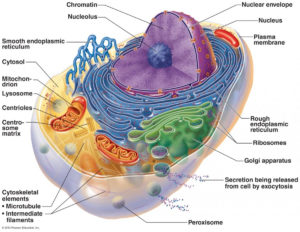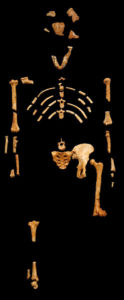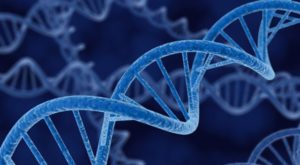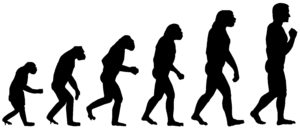 In Part I, we looked at the high-level challenges facing Dawkins’ description of Darwinism in The Blind Watchmaker. Now we shift our attention to some of the specific examples and “evidences” he uses to build the case. Continue reading
In Part I, we looked at the high-level challenges facing Dawkins’ description of Darwinism in The Blind Watchmaker. Now we shift our attention to some of the specific examples and “evidences” he uses to build the case. Continue reading
Tag Archives: Theory of Evolution
Is the Watchmaker Blind? – Part I
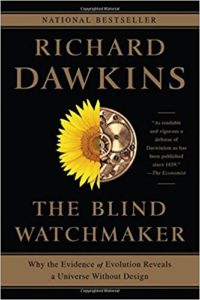 Richard Dawkins wrote The Blind Watchmaker to provide a “non-miraculous account of the existence of complex adaptations.”1 The Economist magazine says it is “as readable and vigorous a defense of Darwinism as has been published since 1859.” Logic & Light has addressed the theory of evolution before, but it makes sense for us to review and critique this book to ensure both sides of the debate are adequately considered.
Richard Dawkins wrote The Blind Watchmaker to provide a “non-miraculous account of the existence of complex adaptations.”1 The Economist magazine says it is “as readable and vigorous a defense of Darwinism as has been published since 1859.” Logic & Light has addressed the theory of evolution before, but it makes sense for us to review and critique this book to ensure both sides of the debate are adequately considered.
We will do so in a two-part series. This first section will address the high-level arguments Dawkins makes and the problems with them. The second article will go into some of Dawkins more specific claims. Continue reading
Evolution, Part VI: Even More Challenges for Evolution
Read Part I, Part II, Part III, Part IV, Part V
Irreducible complexity
Another hurdle for evolution is to explain so-called “irreducible complexity.” The challenge is how evolution, through small, incremental steps can explain complex systems with many intricate, interdependent parts. Continue reading
Evolution, Part V: Other Challenges for Evolution
Read Part I, Part II, Part III, Part IV
Answering “Other Evidences”
We ended Part I by discussing several other arguments used to support evolution beyond fossil and genetic evidence. We will now briefly address those here. Continue reading
Evolution, Part IV: Ape to Man Evolution
Read Part I, Part II, Part III
One of the most contentious issues within evolution is the idea that mankind evolved “from monkeys.” According to evolutionary theory, humans and modern apes evolved from a common ancestor five to ten million years ago.1 This theory is based on genetic similarities between humans and apes, estimates from our “genetic clocks,” and a supposed wealth of fossil evidence that shows a gradual shift in physiology bridging the gap between the two.
It is true that the vast majority of biologists, geneticists, and paleoanthropologists accept “ape to man” evolution. What you may not know however, is that there is significant debate within the scientific community about how this process could have occurred. Contrary to popular opinion, the evidence supporting this progression is anything but clear. The neat, clean diagrams shown in text books and discussed in mainstream media are myths. Even evolutionary scientists admit this fact: Continue reading
Evolution, Part III: The Fossil Record
Next, we turn our attention to the fossil record. As stated in Part I, the fossil record does illustrate an increase in complexity over time, from single-celled to multi-celled to more complicated life, as evolution predicts. But does the rest of the fossil record match up with the evolutionary model? Continue reading
Evolution, Part II: What Genetics Really Tells Us
While the genetic evidence at first seems like one of the strongest arguments in favor of evolution, it’s ultimately the theory’s largest Achilles heel. Ironically, the more science has learned about DNA and genetics, the more apparent evolution’s challenges have become. Continue reading
Evolution, Part I
Logic & Light has touched on the issue of evolution in several posts. But since this topic is of such importance, a more in-depth, multi-part analysis is warranted.
Evolution is a pivotal issue for several reasons. First, it is the very foundation of the naturalistic worldview. According to Richard Dawkins, Darwin’s philosophy made “it possible to be an intellectually fulfilled atheist1.” If evolution is not true, naturalism is unquestionably false. Continue reading
The War That Wasn’t
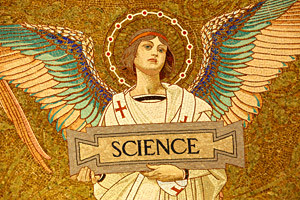 Many skeptics love to talk about the “war” between Science and Christianity. They characterize Christianity as one of the great evils of the world perpetrating ignorance and superstition while Science is in the noble and relentless pursuit of truth at all costs. Of course, because of Christianity’s vast reach and power, it has persecuted and suppressed Science in an ultimately fruitless attempt to hide its own fallacies. At least that’s how the story goes. Continue reading
Many skeptics love to talk about the “war” between Science and Christianity. They characterize Christianity as one of the great evils of the world perpetrating ignorance and superstition while Science is in the noble and relentless pursuit of truth at all costs. Of course, because of Christianity’s vast reach and power, it has persecuted and suppressed Science in an ultimately fruitless attempt to hide its own fallacies. At least that’s how the story goes. Continue reading


